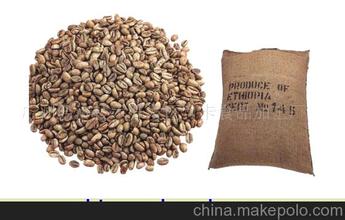Introduction to the method of Variety treatment in Coffee Bean Flavor description region of Colombia sierra navada
Introduction to the method of Variety treatment in Coffee Bean Flavor description region of Colombia sierra navada
The pure taste of Colombian coffee comes from Colombia's natural environment with the most favorable conditions for coffee growth. But beyond that, it is inseparable from the hard work of local growers. In Colombia, coffee cultivation has reached 1.07 million hectares, there are about 302000 coffee plantations in the country, and 30 to 40 per cent of the rural population depends directly on coffee production. Although there are many farms in Colombia, they are not large in area. The area of each farm is only about 2 hectares, and more than 80% of the coffee plantations have only about 5000 coffee trees, an average of 3000. Thus it can be seen that agriculture in Colombia belongs to the small-scale farm type. The locals plant tall trees or banana trees around the coffee trees. Build an Arbor for coffee trees at the seedling stage to ensure the cool and humid environment needed for coffee growth. Due to the high humidity, small temperature difference and slow ripening of coffee beans in the coffee forest, which is conducive to the accumulation of caffeine and aromatic substances, the quality of coffee is the best.
Among the many coffee producing areas in Colombia, Magdalena is one of the northernmost. The snow-capped Mount Santa Marta and the sapphire Caribbean have been gazing for a long time, forming a unique local microclimate. The coffee produced here is named after the Snow Mountain (Sierra Nevada), and the coffee variety is 100% Typica. Famous for its sparse production and excellent quality, I remember when Columbia Snow Mountain Coffee opened a tasting meeting at the Bean Uncle Coffee roaster in 2010, recalling the lovely and friendly scene when my friends were learning to say Sierra Nevada in Spanish. After Xing Yue and Xiao Bao heard the origin, they named this coffee "looking forward to each other". The little bonsai painted it, thanks to these three girls, my good friend. Now that everyone is busy, we have to look at each other.
The main varieties of Colombian coffee are small grains of coffee. Plants are small trees or large shrubs, 5-8 m tall, usually much branched at base; old branches gray-white, nodes dilated, young branches glabrous, compressed. Leaves thinly leathery, ovate-lanceolate or lanceolate, 6-14 cm long and 3.5-5 cm wide, apex long acuminate, acuminate part 10-15 mm long, base cuneate or slightly obtuse, rarely rounded, entire or shallowly wavy, both surfaces glabrous, lower vein axils with or without small pores; midrib raised on both surfaces of leaf, 7-13 on each side of lateral veins; petiole 8-15 mm long Stipules broadly triangular, arising from the tip of the upper part of the young branch conical or awn tip, the tip of the old branch is often protruding tip, 3-6 mm long. Cymes several clustered in leaf axils, each with 2-5 flowers, without a peduncle or with a very short peduncle; flowers fragrant, with pedicels 0.5-1 mm long; bracts basally somewhat connate, dimorphic, of which 2 are broadly triangular, nearly equal in length and width, and the other 2 lanceolate, twice as long as wide.

Important Notice :
前街咖啡 FrontStreet Coffee has moved to new addredd:
FrontStreet Coffee Address: 315,Donghua East Road,GuangZhou
Tel:020 38364473
- Prev

Where are the best Geisha coffee beans produced in the world?
Where are the world's best Geisha coffee beans produced? a queen of the coffee world: the Blue Mountains of Jamaica and Kona, Hawaii. In the past, the identification of top coffee used to follow Japan. More than 90% of Blue Mountain was exported to Japan, and 100% of Blue Mountain could not be bought in the domestic market. With the continuous improvement of the standard of coffee-producing countries and the sharing of information, we are exposed to
- Next

Introduction to the flavor description of extremely hard coffee beans in Jasmine Manor in Guatemala
Guatemala Jasmine Manor extremely hard Coffee Bean Flavor description the taste of Guatemala is bounded by Mexico to the north, Honduras and El Salvador to the south, the Caribbean to the east and the Pacific Ocean to the west, with tropical rain forests, volcanic geology, plateau valleys and changeable micro-climate. Guatemalan coffee once enjoyed a reputation as the best quality coffee in the world.
Related
- Detailed explanation of Jadeite planting Land in Panamanian Jadeite Manor introduction to the grading system of Jadeite competitive bidding, Red bid, Green bid and Rose Summer
- Story of Coffee planting in Brenka region of Costa Rica Stonehenge Manor anaerobic heavy honey treatment of flavor mouth
- What's on the barrel of Blue Mountain Coffee beans?
- Can American coffee also pull flowers? How to use hot American style to pull out a good-looking pattern?
- Can you make a cold extract with coffee beans? What is the right proportion for cold-extracted coffee formula?
- Indonesian PWN Gold Mandrine Coffee Origin Features Flavor How to Chong? Mandolin coffee is American.
- A brief introduction to the flavor characteristics of Brazilian yellow bourbon coffee beans
- What is the effect of different water quality on the flavor of cold-extracted coffee? What kind of water is best for brewing coffee?
- Why do you think of Rose Summer whenever you mention Panamanian coffee?
- Introduction to the characteristics of authentic blue mountain coffee bean producing areas? What is the CIB Coffee Authority in Jamaica?

